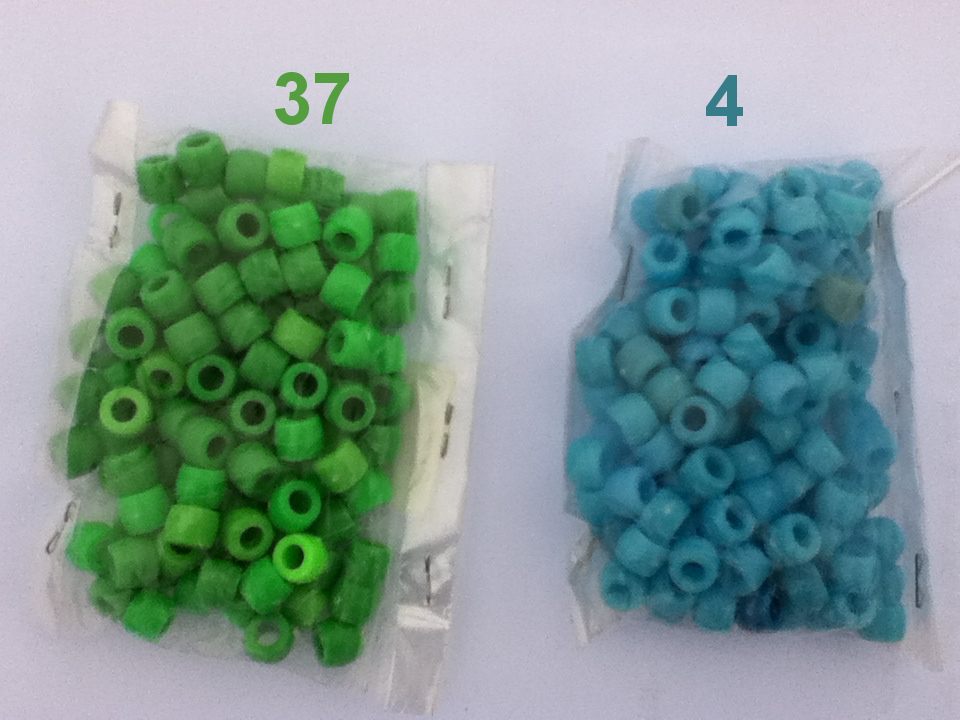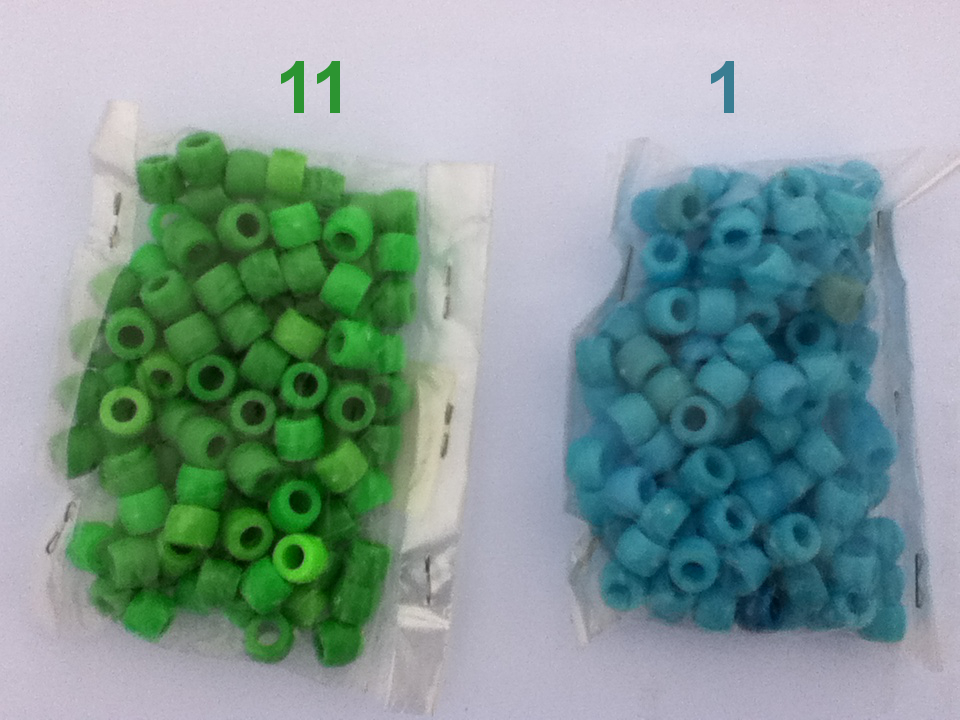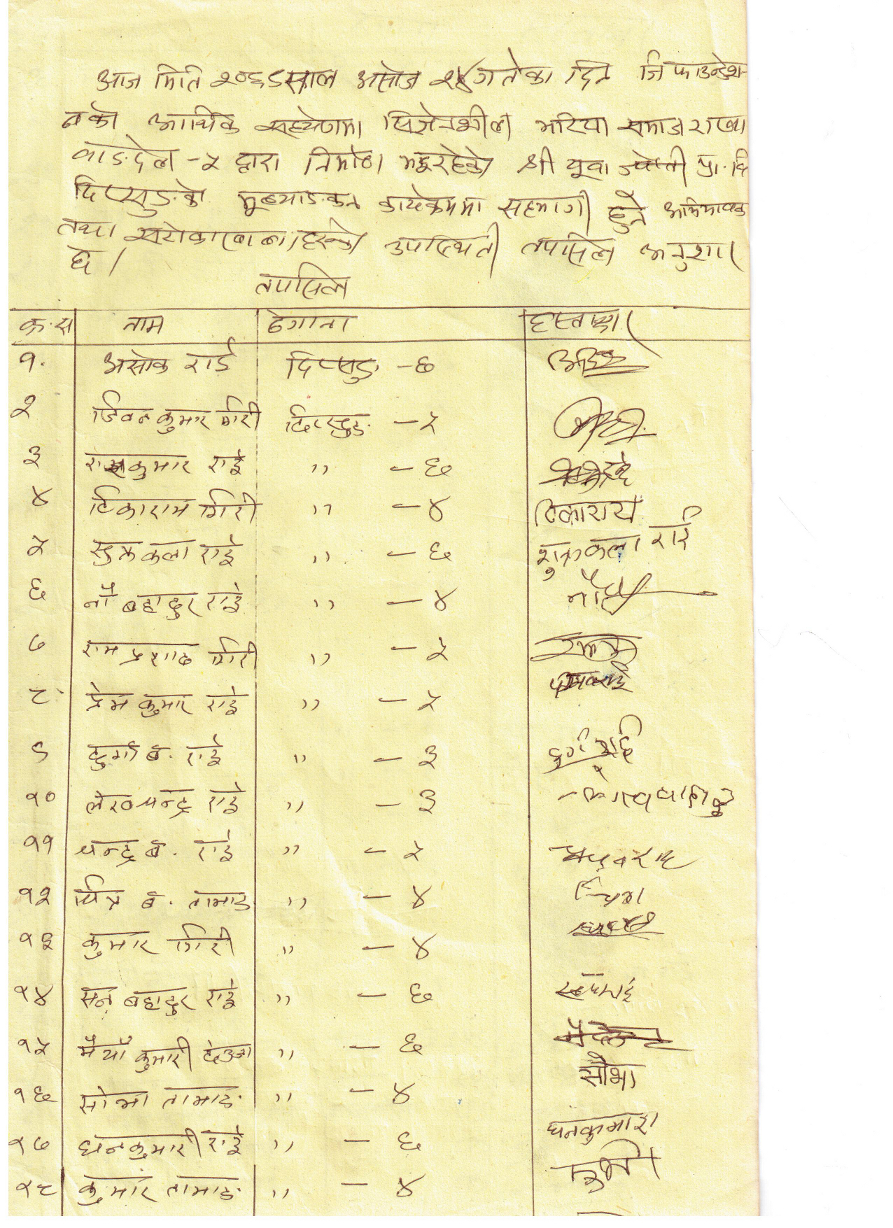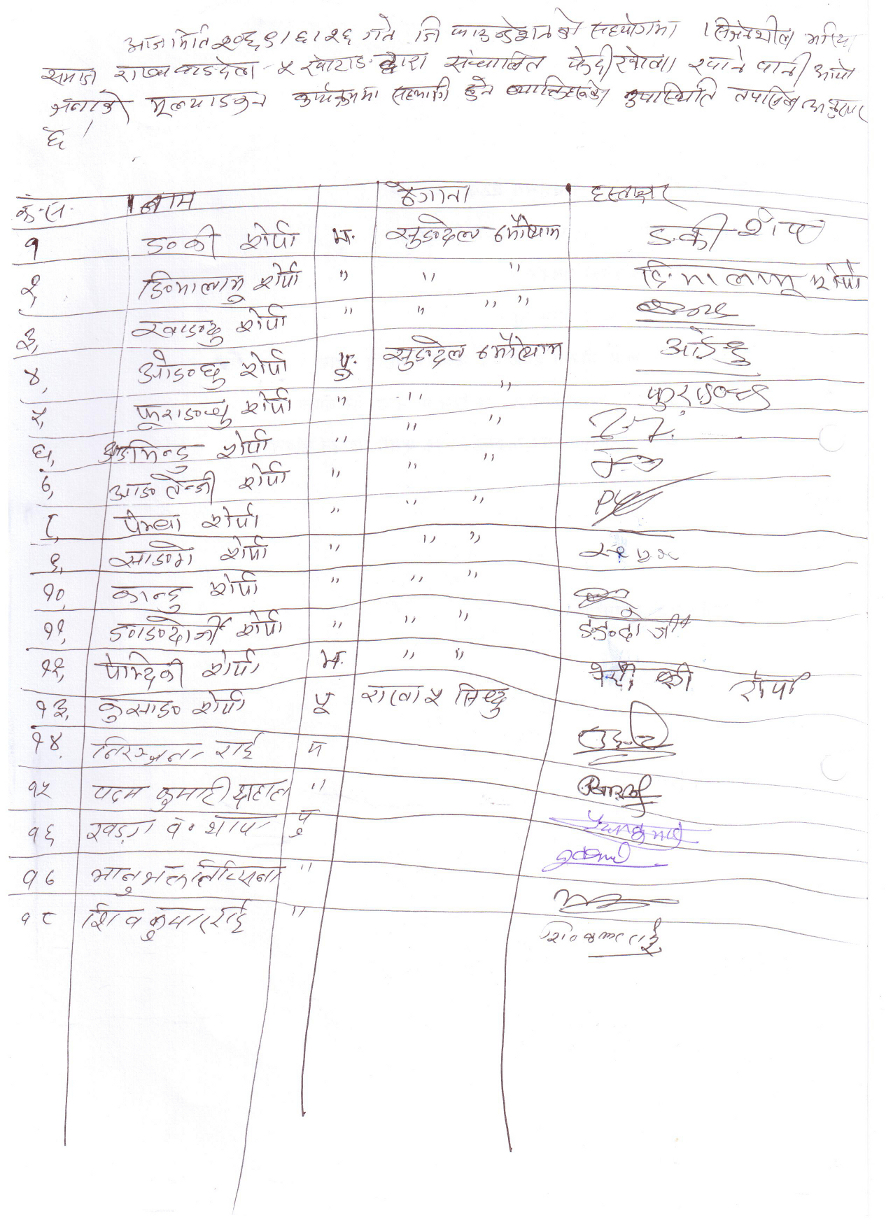In the Nepali language that I learned, the word “हरियो” (pronounced “hariyo”) means “green” while the word “नीलो” (pronounced “nilo”) means blue. I did some experiments to test whether the words refer to the same colors among people in Khotang, Nepal as they do for me. Although these experiments were performed during daytime, the lighting was poor.
I gave plastic beads of 5 different colors-- red, green, orange, blue, and purple-- to 42 residents of Dipru, Khotang. (More than 42 people were present in the meeting.) Each person got roughly the same number of beads of each color. In Nepali, I asked people to put a green (हरियो) bead into a container, without consulting with others, and without letting others know of their choice of color. 37 of the participants put green beads in the container, 4 put in blue, and 1 put in a purple bead.

I repeated the experiment in Mauretham, Khotang with 12 residents of the village under similar conditions. (Again, more than 12 people were present at the meeting.) 11 of the participants put green beads in the container, and 1 put in a blue bead.

Below is a record of attendance from Dipru:


Below is a record of attendance from Mauretham:
